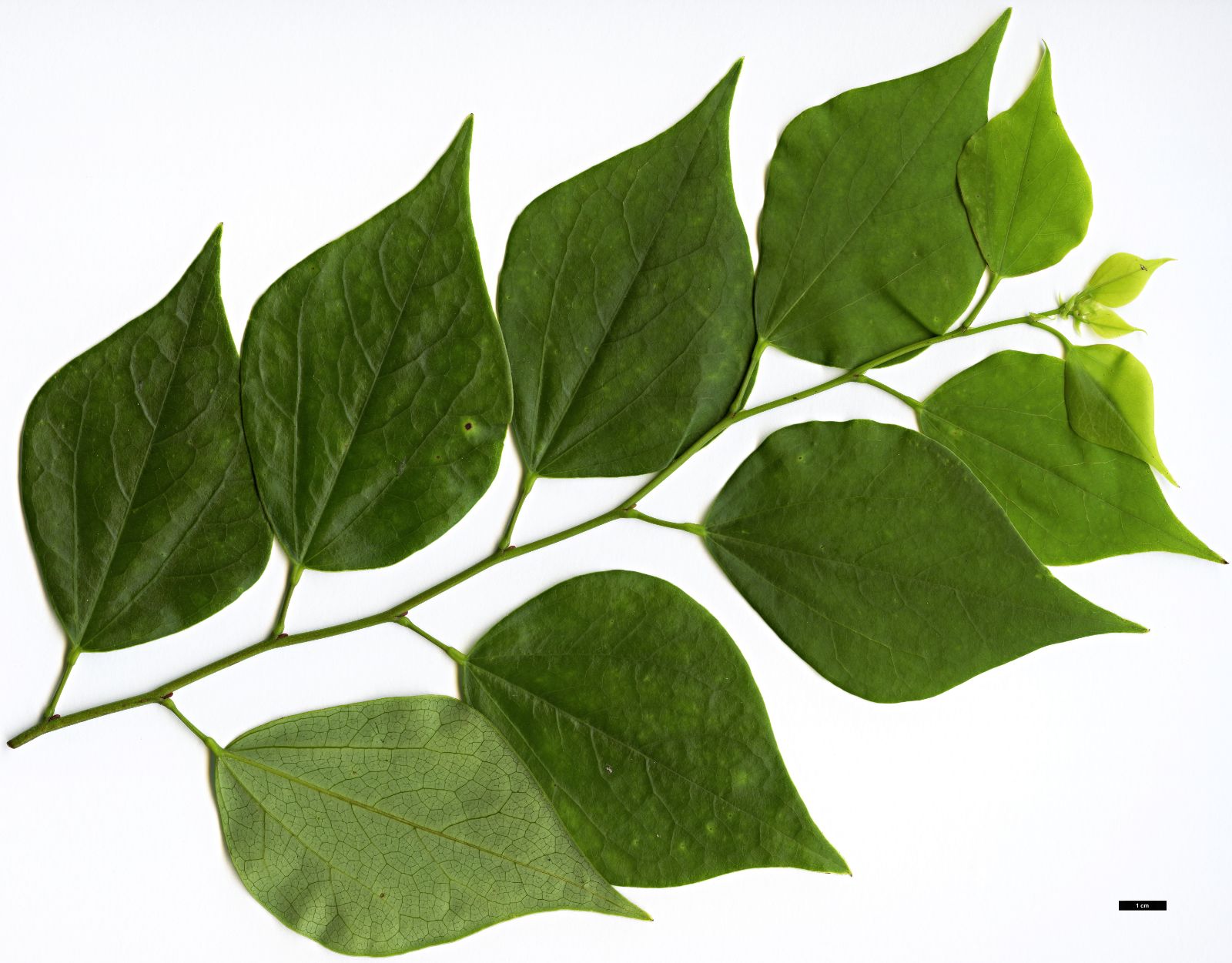Cercis chuniana
Credits
Article from New Trees by John Grimshaw & Ross Bayton
Recommended citation
'Cercis chuniana' from the website Trees and Shrubs Online (treesandshrubsonline.
Genus
Synonyms
- C. likiangensis Chun
Tree 6–27 m, 15–20 cm dbh. Branchlets glabrous, purplish above and green below. Leaves ovate to rhomboidal, 7–10 × 4 cm, glabrous on both surfaces although with sparse hairs in the axils of the veins below, and both surfaces sometimes white-farinose, veins prominent, three to five major veins diverging at the base, veins on lower surface elevated and reticulate, base asymmetrical, apex acuminate; petiole short, about 1 cm long. Inflorescence an axillary raceme 3–5 cm, with few (2–10) flowers. Flowers pink; from inspection of images of the flowers, they appear to be similar to those of other Cercis species. Fruit a purplish legume, elongate, narrowly elliptic, straight and flat, 6–10 × 1.8 cm, thin and papery, and with a narrow wing on one side and a short sharp beak. Metcalf 1940, Dezhao et al. 2008. Distribution CHINA: Guangdong, Guangxi, Guizhou, Hunan, Jiangxi. Habitat Unrecorded. USDA Hardiness Zone 7–8. Conservation status Not evaluated.
A specimen labelled Cercis chuniana was observed in the JC Raulston Arboretum in May 2006, but has since been determined by Laurence J. Hatch to be incorrectly named (L. Hatch, pers. comm. 2007) and has been removed. This plant did not have the characteristic non-cordiform leaves or glaucous to farinose undersides of C. chuniana. Any propagations from it should therefore be regarded with suspicion. Our own fingers were burned over a specimen at Kew received in 1995 from a mysterious ‘University of Raleigh’ (almost certainly from J.C. Raulston, of North Carolina State University in Raleigh). Flowering material from this tree was drawn by Hazel Wilks for this book, but re-examination of the plant in the light of more recently available sources demonstrates quite clearly that it is not this species. The true C. chuniana may not be in cultivation.





